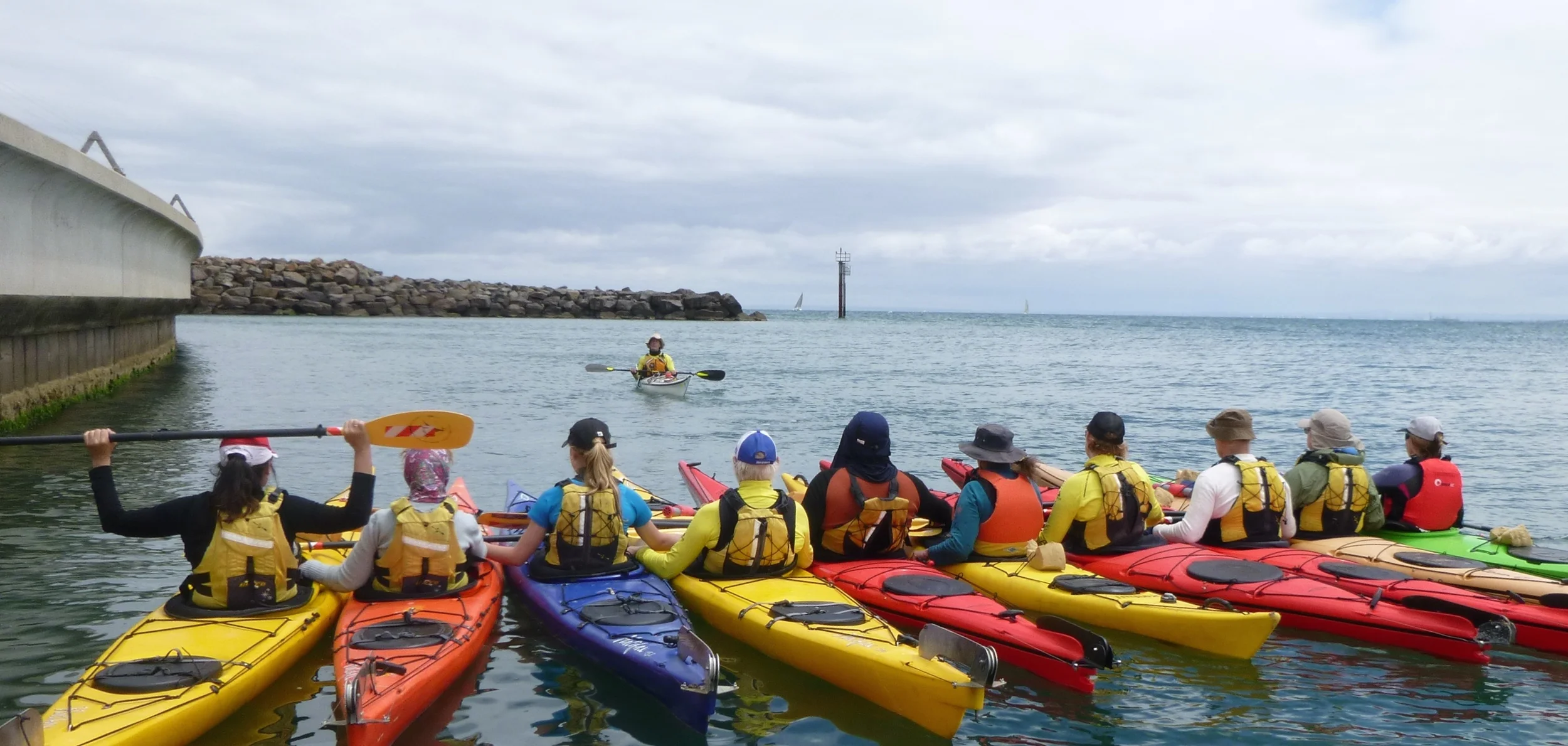Paddle Australia Qualification Scheme - Courses and Qualifications
Rohan Klopfer is an accredited Assessor with Paddle Australia (formerly Australian Canoeing) and is accredited for coaching and assessing Basic Skills, Flat water, Whitewater, Coastal and Sea Kayaking Awards.
Basic Skills certification is included in our Learn to Sea Kayak - Sea Starter Course or we can provide a Skills course for your school or organisation (Basic, Coastal, Flat-water, Whitewater, Sea and Enclosed Sea Skills).
Our Guide and Instructor courses are aimed at people wishing to gain Paddle Australia qualifications for employment in the industry.
Follow the links below for information on our courses:
Basic Skills Award
Which Qualification - Leader, Guide, Instructor?
Which Environment - Flat water, Enclosed Sea, Sea?
Skills Awards
Flat-water Canoe / Kayak Guide or Instructor
Coastal Guide
Sea Leader
Enclosed Sea Guide or Instructor
Sea Guide
Call or email us to discuss: 0410 329 090 and info@eastcoastkayaking.com
Basic Skills Award
The Basic Skills Award is a participation award where the paddler demonstrates the fundamental skills introduced during our Learn to Paddle Sessions: included in our Sea Starter Course and full day Private Tuition sessions.
We can also deliver a tailored Basic Skills day program to your corporate, school, or government department group in metro or Victorian regional areas.
Assessment is by observation throughout the session in the sheltered waters of Sandringham Harbour (or other suitable Regional venue for your private group).
The paddler performs in a satisfactory and confident manner and can:
Present craft and equipment for inspection (hatches and equipment set or stowed ready for launch, spare equipment waterproofed).
Demonstrate understanding of the basic safety requirements for paddlers and their craft and appreciation of the use of lifejackets.
Swim 25 metres in kayaking clothes (shirt, shorts and shoes as a minimum, and with a level 50 lifejacket) and swim under the craft to surface on the other side.
Launch the craft, embark and paddle away from the launching point.
Demonstrate in flat and undemanding waters:
- understanding of correct posture and basic injury prevention
- Forward and reverse paddle
- Forward and reverse sweeps
- Emergency stops
- Form into a raft, in a timely manner (no time wasted), in a way that promotes safety fro all involved; then disperse
- Paddle to deep water, capsize and assist with a rescue as rescuee.
Upon completion of the course, you will receive a notification email from Paddle Australia.
Which Qualification? Sea Leader, Guide or Instructor?
Will you be taking people on a tour where there is not the intention of them learning to be independent paddlers or will you be training people intending to take up paddling as a sport? Paddle Australia defines Sea Leaders, Guides and Instructors as:
Sea Leader - a holder of the PA Sea Leader award and is qualified to lead Sea Skills holders. Typically this is a qualification used within a paddling club.
Guide - A person who leads or guides a group without the intention of imparting skills or knowledge beyond that which is necessary to participate safely and adequately in the activity. At the end of a session or program with a guide, the intent is not for the participant to have acquired the skills to independently participate in the activity.
Instructor - A person who facilitates skill transfer or development to participants in order that they may act independently or with minimal supervision. This requires the instructor to be able to critique technique, apply a variety of appropriate instructional strategies and may require them to assess participant’s skill acquisition at the end of a program or session. Instructor awards include all the elements of the related Guide awards.
Which Environment?
There are skills, Guide and Instructor qualifications attainable for different paddle craft and levels of skill and experience and for the different paddling environments.
Before applying for a Leader, Guide or Instructor Award (ie. to lead, guide or instruct others) you should be capably paddling at the level required for the relevant Skills Award in the environment you wish to qualify for:
Flat water
Flat water areas are areas such as lakes, dams, slow moving rivers, etc. An area should not be classified as flat water if any of the following apply:
rapids of any grade
surf (of any size) entry or exit
if the area is in the entrance structure to an estuary or embayment
an area affected by swell
documented tidal rips (refer to marine charts)
documented tidal current greater than 1 knot (refer to marine charts)
any area where the tide (rise or fall) removes a landing area or makes it unsuitable
distances greater than 400 metres from shore
fetch greater than 1 nautical mile.
The transition from flat water to moving water will often occur in the area of the following features:
major river bend
barrier sand bar structure
constriction in river.
For more information on Flat water Qualifications - Guide, Instructor and Moving Water Endorsement.
Enclosed Sea
Demonstrated the ability to plan and conduct personal kayaking activities in sea kayaks in enclosed waters defined as:
Bays and Harbours
Moderate conditions (forecast or 11-16 knots)
Maximum 1.5 nautical miles from shore
Breaking (overtopping) waves (sea) up to 0.5m
No surf
Sea
Demonstrated the ability to plan and conduct personal kayaking activities in sea kayaks at sea defined as:
Outside of estuaries, embayments or other sheltering reefs or islands in moderate conditions
Conditions below Fresh*, as defined by the Beaufort Scale and used by the Bureau of Meteorology
Areas of exposed coastline that are simple, not involving overfalls, tidal races - difficult landings or open crossings may be included
Distances of up to 4 nautical miles from the nearest shore
Breaking (overtopping) waves (sea) up to 1m
Surf to 1m
*Beaufort Scale defines Fresh conditions as 17 to 21 knots of wind. See BOM website for more.


